The six mural column designs symbolically reflect the intersection of the Ojibwe and Lakota/Dakota people, with the western side of the mural (three columns) showcasing the traditional geometric patterning of the Lakota/Dakota and the east side (three columns) the floral patterning of the Ojibwe. The middle column of each side announces the “American Indian Cultural Corridor” and its respective neighborhoods: Seward and Ventura Village.
Seeking to recognize the other cultural groups of the neighborhoods, each remaining column shows the textile work of a different cultural group as a border around the Lakota/Dakota or Ojibwe principal pattern and as a medallion at the base of the column. On the east/Ojibwe side we showcase the patterns of African Americans/East Africans and Hmong people. On the west/Lakota/Dakota side we showcase patterns of Mexico and Scandinavia.
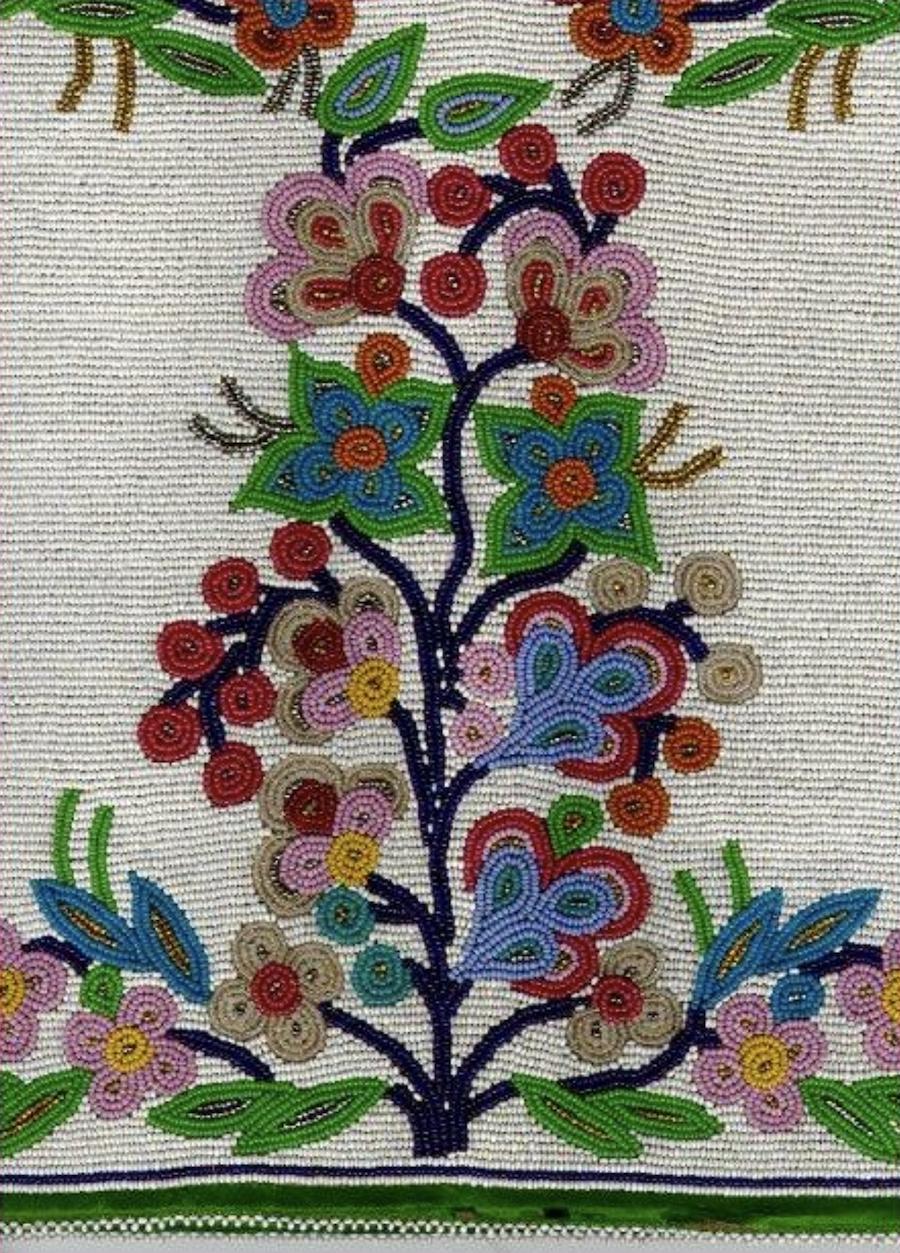
A Dakota bag decorated with geometric beadwork. Given to Frances Densmore from Chief Red Fox of the Standing Rock Reservation, N.D.., in the 1910s.
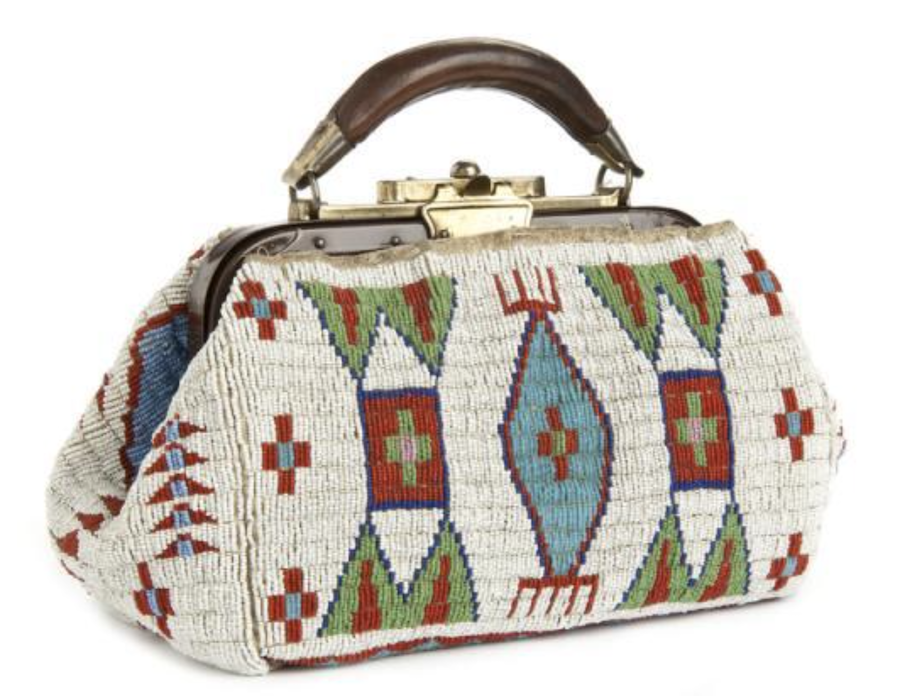
Ojibway beadwork
GoodSpace Murals is a community-focused public art studio specializing in large-scale murals and mosaics. Each public artwork is created for the unique social context and physical landscape of its site. We aim to work in partnership with community organizations, community members, and socially focused businesses to lend our community art skills to further your community’s vision through the creation of public art.
Based in Minneapolis, Minn., woman + mama owned, GoodSpace Murals has been traveling across the U.S. activating walls and public spaces since 2016.
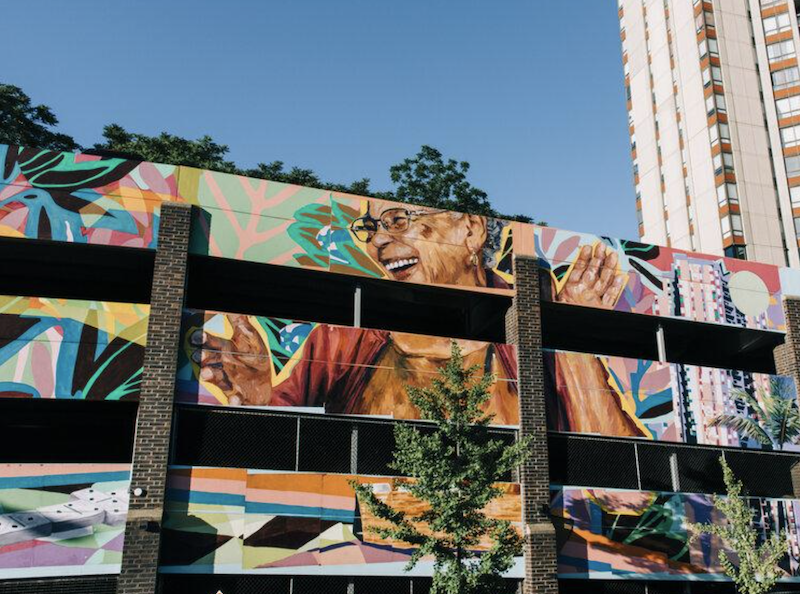
Home Here, Aqui En Casa, Fresh Paint Springfield Mural Festival, Springfield, Mass.
Artist's website: goodspacemurals.com
The American Boulevard Station, and five other stations, originally had paver designs on the platforms created by artist Richard Elliott. Each platform was inspired by artifacts or architectural details found in the Minneapolis/St. Paul communities and were developed by working with museums, community members, and curators. The specific designs selected as inspirational starting points were picked for their cultural and historical importance and fall into three groups; native motif, immigrant fabrics, and the culture that has developed in Minneapolis as expressed through its architecture. Each platform design stands on its own, but together they make a unified statement about the cultural history of Minneapolis.
Collectively, the artwork is titled, Then Till Now: A History and Culture Based Portrait Of Minneapolis As Expressed Through Six Geometric Platform Designs and originally appeared at Cedar-Riverside, Franklin, 38th Street, 46th Street, VA Medical Center, and American Boulevard stations.
Unfortunately, the paver bricks did not hold up well with severe Minnesota winters and the heavy foot traffic of a transit system. The only remaining paver design exists at American Boulevard Station.
Artist's Website: reflectorart.com/dick/index.html
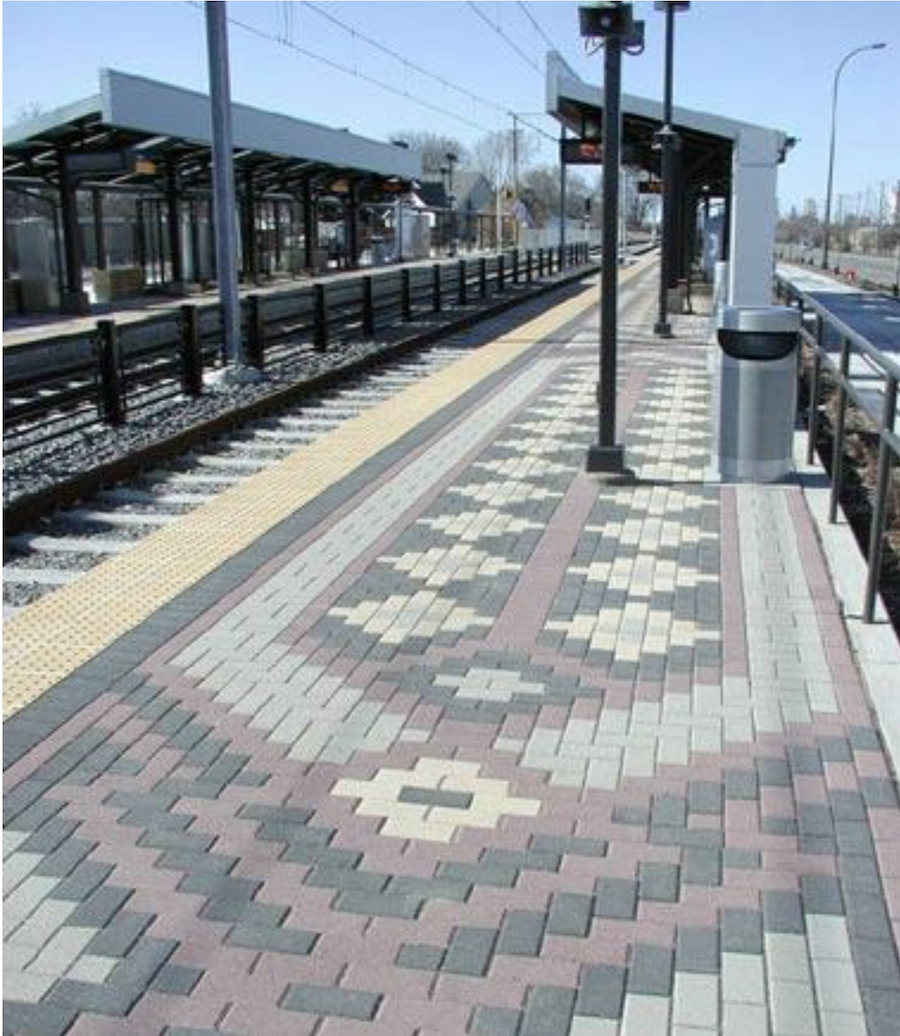
This image on the northbound platform: To represent commerce, I am using patterns from the 1901 Grain Exchange, designed by Minneapolis Architects Kees and Colburn at the 46th Street Station. 200’x9’

This image: An African woven feather textile inspired the Cedar/Riverside Station. 200' x 16'
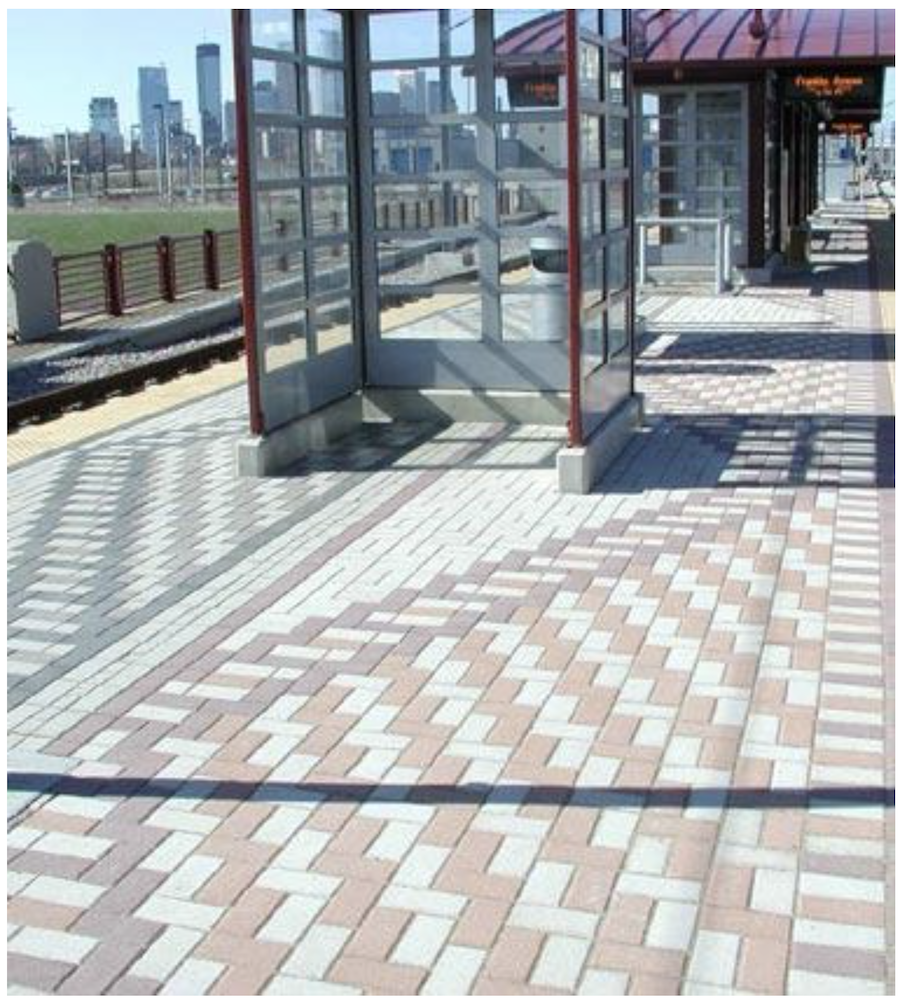
This image: The native influence is seen at Franklin Avenue Station and is based on two 1,400-year-old pottery shards from the Cambria site along the Minnesota River. 200’x16’